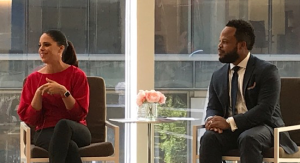 With budget constraints tighter than ever, you may be thinking how can your nonprofit possibly afford to offer paid (or even unpaid) sabbaticals? But in today’s climate, the real question is how can you afford not to?
With budget constraints tighter than ever, you may be thinking how can your nonprofit possibly afford to offer paid (or even unpaid) sabbaticals? But in today’s climate, the real question is how can you afford not to?
It’s common knowledge—those who work in the nonprofit sector are at high risk of burnout, especially at the leadership level. These dedicated individuals face impossible budgets, unrealistic expectations, staffing challenges, endless client needs, changing government regulations and a multitude of stressors that eat up each day. Even working incredibly long hours, there is little time left to reflect, innovate, gain fresh perspectives, monitor new trends, prepare for shifting politics and lead proactively into the future.
The sabbatical offers an effective and surprisingly feasible solution. Not only successful in relieving burnout and lowering turnover, sabbaticals can also strengthen capacity, sustainability and impact. And there are ways to make it work with budgets of all sizes.
Proven to be effective
The Durfee Foundation in California, one of a growing list of foundations supporting sabbaticals, has operated their program since 1997, financing more than 100 nonprofit leaders to take paid time off. They recently commissioned A 20-Year retrospective on the Durfee Foundation Sabbatical Program, revealing that “Very few capacity building interventions provide as much bang for the buck as the simple act of offering a sabbatical.”
Steve Park, CEO at Little Lights, sees the benefits after his recent experience. “The sabbatical gave me a chance to recharge and feel more refreshed and creative.” He adds, “My time off also gave the staff, especially our senior staff, an opportunity to step up and take on more responsibility for the organization and have more independence. I believe the organization is stronger as a whole because I was willing to let go and truly unplug”
Another study, written by TSNE’s Deborah Linnell and CompassPoint’s Tim Wolfred, also found that a well-planned sabbatical is productive for the entire leadership of an organization. Researchers surveyed 61 leaders at nonprofits with sabbatical programs. The majority claimed the time away allowed them space to generate new ideas and gain greater confidence in themselves as leaders.
Miriam’s Kitchen has had a program in place since 2010. “When I first approached the board about taking a sabbatical, they were not only receptive to the idea, they felt strongly that the opportunity should be extended to other staff as well,” comments Scott Schenkelberg, CEO, Miriam’s Kitchen. “We’ve found this to be very effective in developing and retaining high performing staff.”
7 top reasons to offer sabbaticals
There are several ways your organization can benefit from a sabbatical program, especially when made available to staff at all levels.
1. Lower turnover and reduce recruitment costs
Studies show that providing sabbatical leave actually breeds loyalty and encourages leaders to stay. It is also an attractive and valued employee benefit that can help with recruitment, and an effective retention tool in keeping high performing staff.
2. Stress test and strengthen organization team
Your team should not be so dependent on any one person that productivity grinds to a halt during an extended vacation or absence. When a staff member is on sabbatical and the rest of the team fills the gap, they learn new skills and tackle new responsibilities. It strengthens the team’s knowledge of what each other does, and makes them a more collaborative and productive group.
3. Cultivate stronger, more informed boards
Involving the board in the planning and implementation of a sabbatical program provides a key learning experience about the executive director’s role, leadership team responsibilities, and how the organization operates. It’s also an opportunity to enhance the collaborative relationship between the board and ED.
4. Groom transitional and future leadership
Whether at the executive or management level, sabbaticals can give aspiring leaders a chance to grow and showcase their skills. Organizations benefit by gaining a higher performing staff—studies show that interim leaders were more effective and responsible when the sabbatical takers returned. Sabbaticals also give nonprofits an opportunity to train and observe potential future leaders.
5. Enhance efficiency across the organization
Sabbaticals require a shuffling of responsibilities that inspires a fresh look at delegation. Often the result is a more efficient use of time and resources. “When you’re used to always doing certain things, you can be reluctant to delegate tasks to other staff—even when you should—because you don’t want to add to their plate,” says Schenkelberg. “After my sabbatical, some tasks did not return to my role, and I was able to be more efficient with my time, focusing my attention where needed most.”
6. Create healthier work habits
The purpose of sabbaticals is to refresh on every level—mentally, physically, emotionally, and readjust our view of what matters most in our lives. This renewed focus on a work-life balance can influence and enhance the culture of the entire organization.
7. Convey a positive message to your communities
Offering a sabbatical program shows your donors, funders and clients that your organization cares about and believes in its staff.
Making it work for your nonprofit
Financing sabbaticals does not have to break the budget. Some different approaches you can take include the following.
- Acquire funding to support your sabbatical program. There are currently a few foundations, including the Meyer Foundation in Washington, DC, already funding sabbaticals, and the list is growing. You can also ask major donors to support the program, and use funding to cover the cost of overtime hours or interim staff.
- Offer a sabbatical at half salary and hire an interim encore executive at half salary for the same length of time. A national survey of people ages 44 to 70 found that over half are either in or interested in encore careers that put their experience to work for the greater good.
- Divide responsibilities among current staff. This option may offer the most benefit to your organization and the lowest financial investment. Miriam’s Kitchen uses this approach and gives those employees assigned additional responsibilities a 5% pay increase during the sabbatical time frame.
Get creative and come up with some other options by forming a team to research and develop a sabbatical policy and ways to fund the program.
Creating a policy
There are no set rules for creating a sabbatical program. Length of time off can vary from a month to six months or longer. Requirements during time off can range from allowing some career-focused pursuits to no work related activity at all. Staff eligibility can also vary. As burnout and stress are not exclusive to executive leaders, many organizations offer sabbatical leave to staff at all levels who meet performance and longevity criteria.
While there are no rules, there are some guidelines available that you can customize to fit your nonprofit. The Durfee Foundation has a Do-It-Yourself Sabbatical Guide with sample policies. Miriam’s Kitchen has also shared their policies in the Center’s Resource Center.
A tool worth implementing
As the stress and challenges of working in the nonprofit sector are unlikely to dissipate, creating a paid sabbatical program is definitely worth serious consideration. Dismissing this benefit on the assumption your nonprofit can’t afford it is a disservice to your organization. There are viable ways to manage the cost, and you’ll find that not only does the value far outweigh the investment, but also the impact can be surprisingly long-term.
Share This Page:
 With budget constraints tighter than ever, you may be thinking how can your nonprofit possibly afford to offer paid (or even unpaid) sabbaticals? But in today’s climate, the real question is how can you afford not to?
With budget constraints tighter than ever, you may be thinking how can your nonprofit possibly afford to offer paid (or even unpaid) sabbaticals? But in today’s climate, the real question is how can you afford not to? Those who attended this year’s sold out event were especially impressed with our featured guest, Soledad O’Brien.
Those who attended this year’s sold out event were especially impressed with our featured guest, Soledad O’Brien.